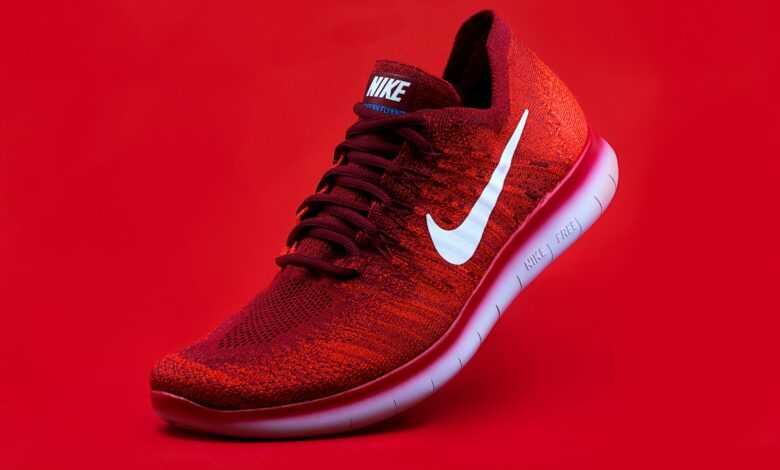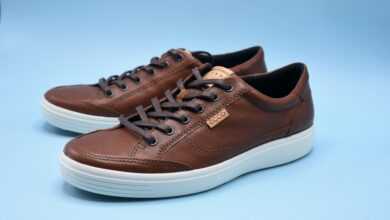
Are Designer Trainers Ever Worth It? A Pragmatic Look for the Everyday Bloke
Trainer culture is massive. From limited-edition “drops” that sell out in seconds to high-fashion houses slapping their logos on a pair of kicks and charging a king’s ransom, it’s easy to feel a bit bewildered. For the everyday British bloke who just wants a decent, stylish pair of trainers that will last, the question often arises: are those eye-wateringly expensive designer trainers ever actually worth the hefty price tag? Or are you just paying for a fancy name and a bit of hype?
This isn’t about chasing the latest “grail” or queuing overnight for a release. This is a pragmatic look at the value proposition. We’re talking cost-per-wear, materials, construction, and when (if ever) splashing out hundreds – or even thousands – on a pair of trainers might make sense for someone who isn’t a dedicated sneakerhead or influencer. Let’s lace up and investigate.
What Exactly Are We Talking About When We Say “Designer Trainers”?
It’s a broad church, but generally, we’re looking at trainers from:
- High-Fashion Houses: Think Gucci, Balenciaga, Prada, Dior, etc. These often feature prominent logos and fashion-forward (sometimes outlandish) designs.
- Luxury Sneaker Brands: Brands like Common Projects, Golden Goose, or Axel Arigato, which specialise in premium, often minimalist, trainers.
- High-End Collaborations: Sometimes mainstream sports brands (Nike, Adidas) collaborate with designers, resulting in limited, pricier versions of classic silhouettes.
The common denominator? A price tag significantly higher than your average pair from Sports Direct or even a well-regarded mid-range brand.
The Argument FOR Splurging (Sometimes):
1. Superior Materials & Construction (Potentially)
This is often the primary justification. High-end trainers *can* be made from premium materials like full-grain Italian leather, supple suede, or innovative technical fabrics. The construction methods might also be more meticulous, involving hand-finishing, Goodyear welting (rare in trainers, but possible), or more durable stitching.
The Pragmatic Take: This can be true, but it’s not a given. You need to do your research. Some designer trainers genuinely use exceptional materials that will wear better and feel more luxurious. Others… not so much, relying more on the brand name. Always inspect the materials and build quality as best you can, or read detailed reviews.
2. Unique Design & Exclusivity
Designer trainers often offer a unique aesthetic that you won’t find on the high street. They can be a way to express individual style and stand out (if that’s your aim). The exclusivity factor – knowing not everyone will have the same pair – also appeals to some.
The Pragmatic Take: If a truly unique design speaks to you and fits your personal style, and you’re comfortable with the price, then this can be a valid reason. However, be wary of overly trendy designs that might look dated quickly. Classic, minimalist designer trainers often have more longevity.
3. Comfort & Fit (Sometimes)
Premium materials and better construction can sometimes translate to a more comfortable fit and better support over time, especially if they use quality footbeds or ergonomic lasts.
The Pragmatic Take: Again, this isn’t guaranteed. Many excellent mid-range trainers offer superb comfort. If comfort is your primary driver, you can often find fantastic options without the designer price tag. Always try them on if possible.
4. Potential for Better “Cost-Per-Wear” (If They Last and You Wear Them A LOT)
This is the big one for value. If you buy a £400 pair of trainers that are exceptionally well-made, you wear them several times a week for three or four years, and they still look good, your cost-per-wear could end up being lower than buying three pairs of £100 trainers that fall apart after a year each.
The Pragmatic Take: This relies heavily on two things:
- Genuine Durability: The trainers actually have to last.
- Your Wearing Habits: You need to wear them frequently and for a long time. If they sit in a box because they’re “too special” or they go out of style quickly, the cost-per-wear argument collapses.
Also, consider if you could get similar durability and style from a £150-£200 pair of quality, non-designer trainers.
5. Resale Value (For a Select Few)
Some highly sought-after designer trainers or limited-edition collaborations can hold or even increase their value on the resale market.
The Pragmatic Take: This is a minefield and generally only applies to very specific “hype” items. For the average bloke, buying trainers as an “investment” is rarely a sensible financial strategy. Buy them to wear them.
The Argument AGAINST Splurging (Often More Compelling for the Everyday Bloke):
1. The “Brand Tax” is Real
A significant portion of the price of many designer trainers is simply for the logo and the associated brand prestige. You can often find trainers with comparable materials and construction from less hyped, specialist footwear brands for a fraction of the cost.
2. Durability Isn’t Always Guaranteed by Price
Just because a trainer costs £500 doesn’t automatically mean it will last five times longer than a £100 pair. Some fashion-focused designer trainers prioritise aesthetics over ruggedness and may not stand up to hard daily wear.
3. Rapidly Changing Trends
Fashion is fickle. That “must-have” chunky designer trainer from two seasons ago might look very dated, very quickly. If you’re dropping serious cash, you want something with staying power.
4. The “Too Precious to Wear” Syndrome
If you spend a fortune on trainers, you might be terrified of actually wearing them out in the unpredictable British weather, scuffing them, or getting them dirty. Trainers are meant to be worn! If they live in their box, they offer zero value.
5. Excellent Mid-Range Alternatives Abound
The market for good quality, stylish trainers in the £80 – £200 range is incredibly strong. Brands like Veja, Novesta, Stepney Workers Club, Karhu, Gola, and classic silhouettes from Adidas (Stan Smiths, Gazelles), Nike (Blazers, Air Force 1s), New Balance, and Asics offer fantastic style, comfort, and decent durability without the designer markup.
So, When MIGHT a Splurge Be Justified for the Pragmatic Bloke?
- It’s a Timeless, Minimalist Classic: Think something like a pair of Common Projects Achilles Low. Simple, exceptionally well-made from top-tier leather, versatile, and unlikely to go out of style. If you wear these religiously for years, the cost-per-wear could make sense.
- You’ve Done Your Research on Materials & Construction: You’re confident you’re paying for genuine quality, not just a label.
- It Fills a Specific Gap in Your Wardrobe and You’ll Wear it Constantly: Perhaps you want one really smart, premium pair of leather trainers to wear with chinos or even a casual suit, and you’ll get huge amounts of wear out of them.
- You Genuinely Love Them, Can Comfortably Afford Them, and Will Get Joy From Wearing Them: Sometimes, an emotional connection to an item (and the financial means to indulge it responsibly) is justification enough, provided your expectations are realistic.
When is it Probably NOT Worth It?
- If you’re buying into fleeting hype or a very “of the moment” trend.
- If you can’t really afford them without stretching yourself financially.
- If you’re not sure about the quality beyond the brand name.
- If you know you’ll be too scared to wear them regularly.
- If a perfectly good, stylish, and durable alternative exists for a third of the price.
The Verdict for the Everyday Bloke
For most of us, dropping several hundred pounds on a single pair of trainers is hard to justify from a purely pragmatic standpoint. The sweet spot for quality, style, and value often lies in well-made trainers from reputable (but not necessarily high-fashion) brands in the £100 – £200 price bracket. These will typically offer good materials, decent construction, and modern style without the “designer tax.”
However, if you find a pair of truly exceptional designer trainers that tick all the boxes for timeless style, proven quality, and you know you’ll wear them into the ground for years to come (and you can comfortably afford them), then they could be a worthwhile investment in your personal style and long-term wardrobe. Just go in with your eyes open, do your homework, and be honest about how much wear you’ll truly get out of them. Don’t let the hype cloud your judgement!




